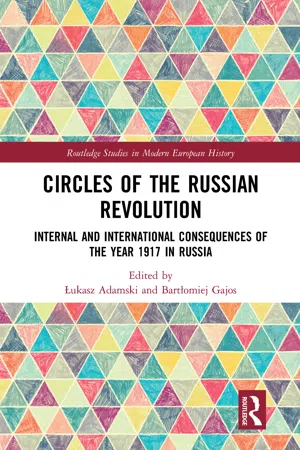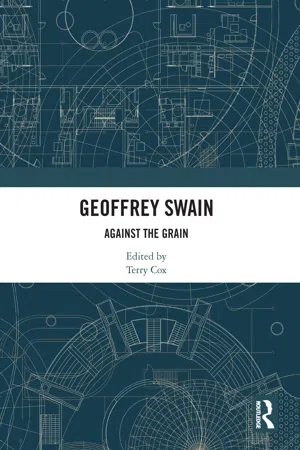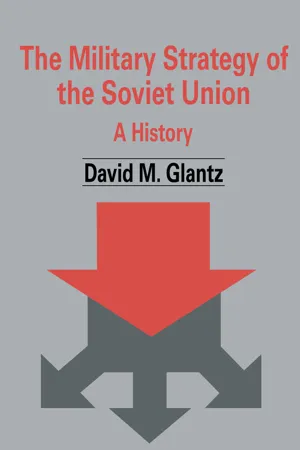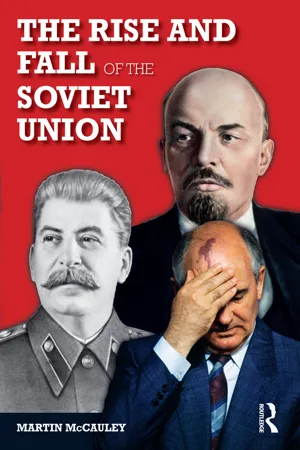History
Russian Civil War
The Russian Civil War was a conflict fought between the Bolshevik Red Army and the anti-Bolshevik White Army, along with various other factions, from 1917 to 1923. It resulted from the power struggle following the Russian Revolution and ultimately led to the establishment of the Soviet Union. The war had a profound impact on the political and social landscape of Russia.
Written by Perlego with AI-assistance
Related key terms
7 Key excerpts on "Russian Civil War"
- eBook - ePub
Twentieth-Century War and Conflict
A Concise Encyclopedia
- Gordon Martel(Author)
- 2014(Publication Date)
- Wiley-Blackwell(Publisher)
R Russian Civil War (1917–1920) DAVID R. STONE The Russian Civil War was a war among Russia’s competing political movements for control of the country in the aftermath of World War I, ending in the victory of Vladimir Lenin’s Bolshevik Party and their supporters (the Reds) over a coalition of military officers, nobles, and others opposed to Bolshevik rule (the Whites). Faced with a growing domestic crisis provoked by urban food shortages and mismanagement of World War I, the government of Russia’s Tsar Nicholas II collapsed in March 1917 and was replaced by dual power, an uneasy balance between a Provisional Government, recognized by Russia’s western allies and made up of members of the pre-revolutionary Russian legislature on one hand, and on the other hand a nationwide network of soviets or councils, collective bodies of workers, soldiers, or peasants who enjoyed popular legitimacy without formal legal authority. In this unstable situation various political movements struggled for power; among those, Lenin’s Bolsheviks, the more radical wing of Russian Marxism, stood out by their uncompromising rejection of continued Russian participation in World War I and their refusal, unlike other left-wing parties, to cooperate with or join the Provisional Government. As economic collapse continued over the course of 1917 and social polarization grew, increasing numbers of workers and soldiers gravitated to the Bolsheviks as the most radical alternative available to them, one untainted by the Provisional Government’s failures. By November 1917, having obtained majorities in a number of key urban soviets, Lenin’s ally Leon Trotsky launched a classic coup d ’ état in the capital Petrograd (St Petersburg’s wartime name), overthrowing the Provisional Government and seizing power in the name of Russia’s soviets. Victory in Petrograd was quickly followed by similar seizures of power in cities throughout Russia as the revolution spread by rail and telegraph - eBook - ePub
- Stephen J. Lee(Author)
- 2008(Publication Date)
- Routledge(Publisher)
While millions had served in the First World War, the Civil War consisted of encounters between Red armies of several hundred thousand and rather better equipped and trained but considerably smaller White ones, supported peripherally and erratically by a minor degree of allied ‘intervention’. Lenin’s was basically a victory by a weak and widely hated group over an enemy even weaker, no less hated, and politically far less clear-headed or united. The divisions existing among the ‘Whites’ were … partly inherent in the whole White situation – the officer class … were virtually incapable of political collaboration in any genuine sense with the more or less legitimate representatives of the majority parties of the Constituent Assembly.Source G: Extract from Geoffrey Swain, The Origins of the Russian Civil War , published in 1996. At the time of publication, the author was Principal Lecturer at the University of the West of England, Bristol.The Russian Civil War was not just the war between the Reds and the Whites, Bolsheviks and generals, which is etched in the popular memory; indeed, this war did relatively little to shape the subsequent Soviet regime – although it did much to create its propaganda image. The Russian Civil War was also a Red versus Green civil war, a war between the Bolsheviks and their socialist opponents led by the pro-peasant Party of the Socialist Revolutionaries (SRs), which started in May 1918 and ended only in June 1922 when the leaders of that party were put on trial. It was this Red versus Green civil war which shaped the Soviet regime, by establishing at the heart of Bolshevik policy a deep-seated antagonism towards the peasantry, something epitomized within less than a decade by Stalin’s policy of forced collectivization of agriculture.For the years 1919–20 this Red versus Green civil war became hopelessly entangled with the White versus Red civil war and subsumed within it. As a result, most studies of the Russian Civil War have concentrated on the White versus Red struggle, a complex enough topic in its own right, and skated over the Red versus Green civil war, describing the fighting of summer 1918 in terms of preliminary skirmishes before the fighting proper started, and treating all fighting after 1920 as essentially a policing operation by the victorious Bolsheviks, rather than a continuation of the events of 1918. This book takes a different approach: when the fighting which took place between 1918 and 1922 is seen as a whole, the origins of both the White versus Red and Red versus Green civil wars have to be traced … Indeed, any study of the origins of the Russian Civil War inevitably leads to a more detailed analysis of the Red versus Green war which both preceded the Red versus White war and continued after it. A history of the origins of the Russian Civil War must be in essence the rediscovery of this forgotten civil war before the civil war. - eBook - ePub
Circles of the Russian Revolution
Internal and International Consequences of the Year 1917 in Russia
- Łukasz Adamski, Bartłomiej Gajos(Authors)
- 2019(Publication Date)
- Routledge(Publisher)
4 In this chapter we shall touch on some of these issues, but at the outset it is worth nothing that it is unlikely that any one macro-level explanation will satisfactorily account for the scale and multiplicity of forms of violence that characterized the twentieth-century or, in our case, the Civil War in Soviet Russia.The Russian Civil War was a period of extreme social strife, when economic, social and political structures collapsed alarmingly, giving way to levels of conflict that had not been seen since the early seventeenth century. The Civil War not only comprised a fierce battle between the Red Army and the White armies, and between the Red Army and the armies of the Allied interventionists, it also extended to conflict between Reds and the Komuch, i.e. the Socialist Revolutionaries who won the Constituent Assembly elections of November 1917 and who had the military backing of the Czech Legion, and conflict involving armies of non-Russian nationalists seeking various degrees of independence from the former empire. In addition to conventional warfare, warlords (atamany ) rampaged in Ukraine, Siberia and the Far East, seizing territory and resources and terrorizing populations; the anarchist army of Nestor Makhno acted largely independently in Ukraine; and there were Red partisans behind White lines in Siberia. Across almost the whole of European Russia there were localized and later mass uprisings by peasants resisting food requisitioning and conscription; and local communities took advantage of generalized lawlessness to settle historical scores. Finally, as law and order broke down, the crime rate soared and, in some regions, bandits preyed on local communities. At times this was a war of almost unimaginable barbarity: one in which peasants boiled alive “commissars”; in which rampaging soldiers slaughtered tens of thousands of Jews; in which Red and White terror ran amuck.5 - Alastair Kocho-Williams(Author)
- 2013(Publication Date)
- Routledge(Publisher)
While this inflamed an already tense political situation, Lenin moved quickly to the establishment of Russia as a one-party state with the Bolsheviks as the party of government. He split the SR majority by briefly including Left SRs in the new government, declared the Constitutional Democrats (Kadets) to be bourgeois and put pressure on other socialists groups to disband during the spring and summer of 1918. While this put the Bolsheviks into a position of greater power, it also served to alienate other revolutionary and progressive groups, which would have consequences later in 1918. So too the Bolsheviks found that their adoption of centralized planning and requisitioning, labelled War Communism, would alienate sectors of the Russian population, particularly the peasantry. While the disastrous situation caused by War Communism would not really be felt until famine and peasant unrest in 1920 and 1921, Russia was on the brink of civil war by summer 1918.Against the backdrop of a political climate that showed that the Bolsheviks were not universally perceived to be legitimate in the first half of 1918, the forces of counter-revolution crystallized. The White movement, in opposition to the Bolshevik Reds, was multifaceted and disparate in terms of political background, desire and geographical location. The one thing that the Whites had, though, was a common goal – the destruction of Bolshevik power. With the organization of military units under Generals Alexander Kornilov, Anton Denikin and Peter Wrangel in the Caucasus and under Baron Roman Ungern-Sternberg and Admiral Alexander Kolchak in Siberia, the Whites and the Reds became locked in civil war. There was no clear aim beyond the removal of the Bolsheviks, although Denikin and Kolchak had notions of forming some kind of government, the latter having more success in the establishment of the ‘Directorate’ at Omsk. The lack of a single purpose meant that the Whites were somewhat disorganized and ineffective against the more coordinated Red forces that the Bolsheviks commanded. Even so, a bitter and fierce Civil War raged in the period 1918–20.White forces, despite their deficiencies of unified purpose beyond the destruction of Bolshevism, pushed towards the Russian core, which the Bolsheviks had successfully gained in late 1917 and early 1918, in European Russia. The assault came from three main directions: Siberia, the South and via the Baltic States. There was some degree of success of the part of the Whites into 1919, but in the end it was the Bolsheviks who were the victors of the Civil War and repelled the forces of counter-revolution.Those who fought against the Bolsheviks were not only anti-Bolshevik elements from the former Russian Empire. Foreign powers intervened on the side of the Whites in the Russian Civil War, making the conflict one with an international dimension. Forces from Great Britain, France, the United States and Japan joined the fray in the summer of 1918, initially stating their aim as being the prevention of allied war materials from falling into German hands, and in order to potentially reignite the Eastern Front and defeat Germany. However, foreign forces remained in Russia after the German defeat and joined in the fight against the Reds.- eBook - ePub
Geoffrey Swain
Against the Grain
- Terry Cox(Author)
- 2018(Publication Date)
- Routledge(Publisher)
1 Swain’s work underlined the fact that the Russian Civil War was not a simple Red versus White conflict (the war between Bolsheviks and counter-revolutionary generals). He lucidly explained the significance of the Red versus Green conflict, the war between the Bolsheviks and their socialist rivals which began in May 1918.2 Jonathan Smele has provided a more in depth discussion of opinions about when the Civil War began and offers his own fresh interpretation, which sets the Civil War in an even wider time frame between 1916 and 1926 (Smele 2015, pp. 17–35).3 In this respect the Civil War in Karelia reflects how, in details, each region had its own story to tell, as has become clear through the work of a growing number of regional studies that have enhanced our understanding of the Civil War (Holquist 2002; Raleigh 2002; Landis 2008; Retish 2008; Novikova 2011; Fraunholtz 2015; Karsch2015).4 I support the conclusions of Aaron Retish here who has suggested in his work on Izhevsk, Vyatka province, that the region’s unique conditions shaped the local political environment at key points but only to a certain degree (Retish 2015, pp. 321–22).5 The Left SRs split with the parent SR party following the October Revolution and took up posts in Sovnarkom.6 World War I divided the Menshevik party into Internationalists and Defencists. The left wing Internationalists opposed Revolutionary Defencism which stressed the importance of a swift negotiated peace, but supported the defence of the country and revolution until that could be achieved. The Internationalists often cooperated with the Bolsheviks and Left SRs in a radical bloc in 1917, but opposed the October Revolution. They believed the Bolsheviks were trying to build socialism but in the wrong way and by using the wrong methods and so tried to influence the Bolsheviks by putting forward alternative proposals (Lande 1974, pp. 6–14).7 This rose sharply following the October Revolution as many people abandoned the capitals for provincial towns. The population of Petrozavodsk rose to 45,000 by September 1918 which resulted in a housing crisis. Izvestiya Olonetskogo Gubernskogo Soveta - eBook - ePub
- David M. Glantz(Author)
- 2019(Publication Date)
- Routledge(Publisher)
Given this turbulent and unstable situation, military operations between various factions developed in virtually every region and from every direction. As the natural focal point of this military action, the new Bolshevik government had to contend with threats from every quarter. It did, however, have the inherent advantage of operating from interior lines against threats from whatever direction they developed.During the initial stages of the Civil War from November 1917 to March 1918, the Bolshevik government consolidated its power against various factions and by March 1918 established its authority over all former Russian territory except the Caucasus and regions held by the Germans and Austrians, with whom Russia was still at war.In March 1918, after months of fruitless negotiations punctuated by a sharp and rapid German advance into the Baltic region, the Bolshevik government signed the Treaty of Brest-Litovsk, which ended Russian participation in the World War and recognized a German-supported puppet government in the Ukraine. While the Brest-Litovsk treaty provided respite from the World War, it also prompted Allied intervention, first in the Caucasus and later in other regions, and strengthened military opposition from White forces. By the summer of 1918, Civil War was a reality, spurred on by intervention in Russia by the forces of a host of Western nations.10Strategic operations during the Civil War encompassed three major theaters (Eastern, Southern, and Western), with several strategic directions (axes) within each theater (see Figures 1 -3 ). Chronologically, military campaigns occurred seasonally across the span of three years within each theater, with lesser operations punctuating the intervals between campaigns.1. Civil War and Intervention: March 1918-March 1919During the summer of 1918, the Bolsheviks faced threats from the south and east. After the defeat of General L. G. Kornilov's anti-Bolshevik force between January and April in the Kuban, General A. I. Denikin assumed command of White forces. By August his forces occupied Ekaterinodar and Novorossiisk, together with the bulk of the Kuban. As yet, however, he was unable to mount a more credible threat to Bolshevik power in southern Russia.11 - eBook - ePub
- Martin Mccauley(Author)
- 2014(Publication Date)
- Routledge(Publisher)
Civil wars are normally more brutal, violent, cruel and corrupting than international conflicts. Murderers, sadists, masochists and psychopaths are given free rein. The Judeo-Christian adage: an eye for an eye and a tooth for a tooth often becomes two eyes for an eye and all teeth for a tooth. Bloodletting can become an addiction. Man reverts to his primitive state. Perhaps the best description of the Russian Civil War is to revert to Darwin: survival of the fittest. In this world the moral imperative is to survive. The means are irrelevant; the end goal everything. The Reds were convinced they would be exterminated if they lost. They had to win.Many disparate groups made up the opponents of the Reds. The main group were the dispossessed upper and middle classes. Then there were the SRs, Mensheviks and all left of centre activists who wanted a democratic, pan-socialist Russia. Anarchists and various nationalist groups in Ukraine saw the opportunity to secure autonomy. Peasants wanted the Bolsheviks off their backs and to run their own lives. Then there were the Germans who wanted to extend their influence. There were also the eighteen nations which constituted the Allied intervention, including Great Britain, the United States and Serbia. They were concentrated in the north. In the Far East the Japanese were eying territory, from Vladivostok westwards. In Azerbaijan, Armenia and Georgia local elites strove for independence from Moscow.The Civil War was fought over three main fronts: the south (Don, Kuban, north Caucasus and Ukraine); the east (Volga, Urals and Siberia); and the north-west (Baltic and Poland). There were also three distinct periods:From the Bolshevik takeover to the end of the First World War, in November 1918. The protagonists were forming. The Allies intervened, so did the Japanese and the Germans. Romania occupied Bessarabia (present-day Moldova).From November 1918 to November 1919. This was the period of greatest success for the Whites, General Nikolai Yudenich threatened Petrograd in the north; General Anton Denikin, in the south, made his most successful advances. Admiral Aleksandr Kolchak, in the east, was also having success.November 1919 to March 1921.
Learn about this page
Index pages curate the most relevant extracts from our library of academic textbooks. They’ve been created using an in-house natural language model (NLM), each adding context and meaning to key research topics.






